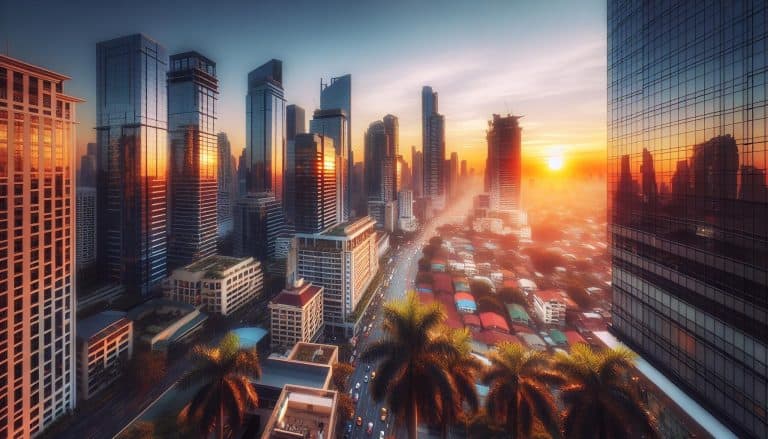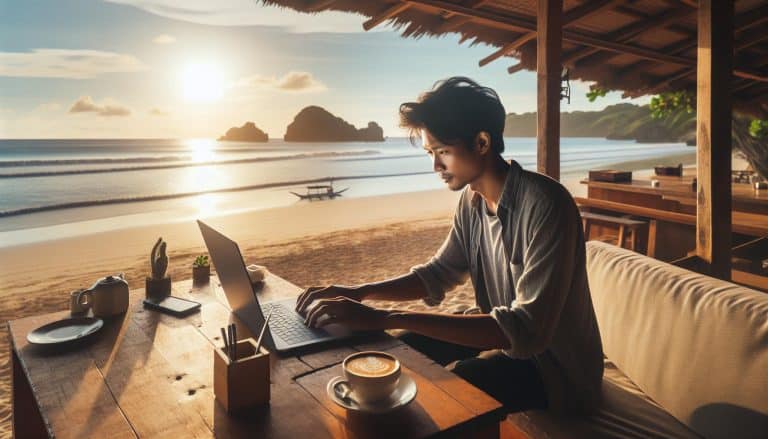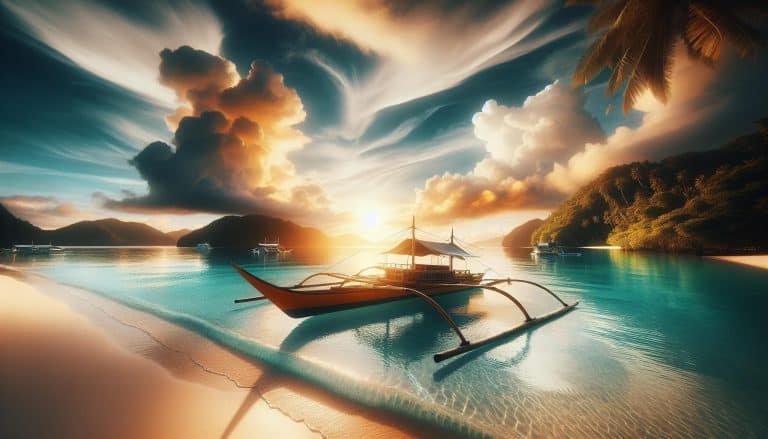Backpacking The Philippines: 2025 Travel Guide
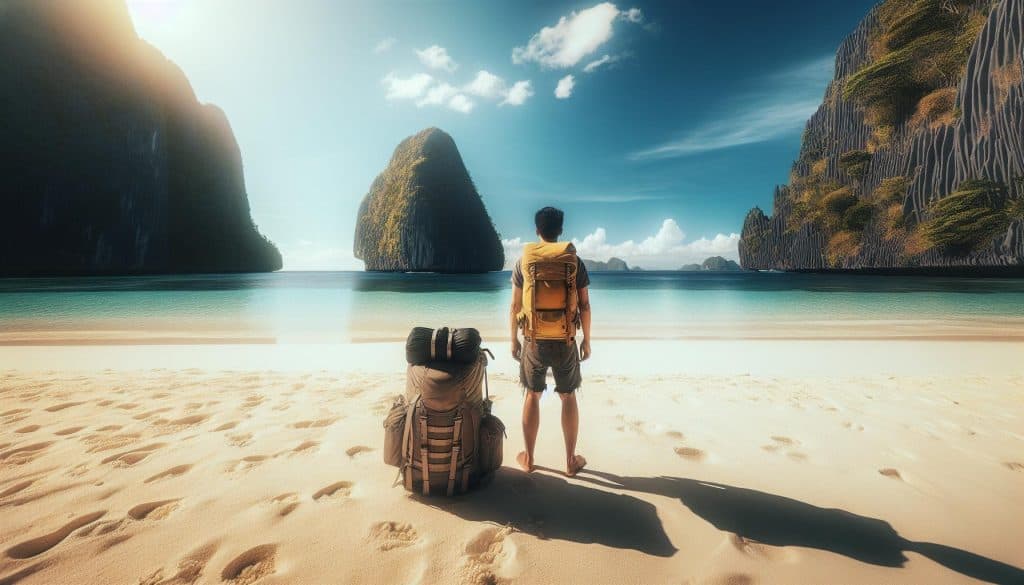
Get ready for the ultimate Philippine adventure in 2025! Backpacking the Philippines is the kind of adventure that feels too good to be true.
Those postcard beaches? They do exist, and they’re stunning.
Add to that the insane liveliness of the markets, the food that you’ll just want more and more of, and really, the people?
They’re the friendliest, most welcoming people you’ll ever meet. And get this – they’re obsessed with discussing basketball. Like, seriously obsessed with it. Be ready for some passionate debates!
Consider this your very own carefully researched cheat sheet, ready to help you unlock the ultimate Philippine experience!
We’ll share with you everything from hassle-free island-hopping tips to those off-the-beaten-path spots that will make your trip unforgettable.
When planning your itinerary, be sure to include the Best Filipino Cities for a truly diverse experience, alongside those idyllic island escapes
Whether your passport is a seasoned veteran or you’re preparing for your first leap into the grand unknown, the Philippines is about to blow your mind.
You’re going to have the time of your life, and I’m cheering for you every step of the way! 🙌
Key Takeaways
- The Philippines absolutely merits a spot at the top of every backpacker’s Southeast Asia bucket list.
- With its breathtaking views, a culture that bursts at the seams with energy, and low-cost travel, it’s an unbeatable experience.
- The best time to visit is during the dry season (November to April) with fine weather and less crowd.
- Most travelers can enter visa-free for up to 30 days, with the option to extend if needed.
- Budget between $30 to $50 a day for accommodations, food, transport, and activities to enjoy yourself.
- Some of the most popular spots are Palawan, Siargao, Cebu, and the Northern Luzon rice terraces, each with distinctive activities.
- Getting around is convenient with local flights, ferry rides, buses, jeepneys, and rentals of motorbikes, making it easy to plan your activities.
Why Backpack the Philippines?
Your backpacking adventure in the Philippines will be one of a kind!
It has more than 7,000 islands, this tropical paradise has everything from beautiful beaches to rich culture.
From exploring waterfalls, island-hopping, or experiencing local customs, the Philippines is a perfect place for budget backpackers.
Here’s why you should include it in your list. 👇
Unique Culture and History
The Philippines has an interesting blend of traditions shaped by Spanish, American & native influences.
You’ll see old places like Intramuros in Manila, a city with walls packed with buildings from colonial times, and Vigan, a UNESCO-recognized town with stone streets.
To further examine Filipino culture, consider visiting Nomadic Southeast Asia, a site that reports on local etiquette, places of interest that have historical value, and advice for experiencing the culture.
Diverse Landscapes and Adventures
The Philippines boasts of its beautiful landscapes, from pristine white beaches to lush, green mountains.
Palawan’s glowing lagoons are a must-see, while Siargao calls to surfers with waves of world-class quality.
If elevation is the preference, Banaue’s stunning rice terraces offer a cultural banquet, while an ascent of Mt. Pulag rewards trekkers with a brilliant ‘sea of clouds’ sunrise.
Biyaheroes (biyaheroes.com) is an excellent site to utilize when planning your journey for reserving ferries and buses across the archipelago.
Budget-Friendly Travel Destination
Backpacking in the Philippines is relatively affordable compared to other Southeast Asian nations.
You can find many comfortable hostels for less than $5 a night, delicious street food for under $2 a dish, and unforgettable island-hopping tours for around $20.
For maximum savings, visit Klook (klook.com) for discounted tours and transportation promotions.
You’ll find unbeatable combination of rich culture, thrilling adventures, and low prices, the Philippines is an ideal destination for travelers seeking an unforgettable experience
Key Travel Advice for Backpacking the Philippines
Backpacking the Philippines is an excellent adventure, but planning does help.
From knowing the best time to visit to staying safe on the road, these are the key tips to enable you to get the best out of your trip.
Best Time to Visit
There are two major seasons in the Philippines: dry (November to May) and rainy (June to October).
The best time to go is during the dry season when it’s sunny outside, and island tours are great.
But if you prefer not to be with big crowds and have lower prices, go during the in-between months (May or November).
For up-to-date weather conditions, check AccuWeather (Philippines) before planning your trip.
Visa Requirements and Entry Rules
Let’s talk about getting you through the door, visa-wise.
So the good news is: if you’re from most Western countries, you can walk right in for 30 days without booking a visa beforehand.
Sweet deal, eh? Just make sure you’ve got a ticket showing you’re continuing on or heading home – they’d like to see that you’ve got somewhere to head!
Now, if you want to stay longer and 30 days simply will not suffice, do not worry about it.
You can renew your visa at the Immigration Bureau (Temporary Visitor – 9A).
They have them in the large cities like Manila and Cebu. It’s a pretty simple thing to do, and think of it as an excuse to view more of those amazing islands!
Basically, the Philippines actually does make it pretty easy for Westerners to drop by and take a peek.
A bit of planning, and before you know it, you’re plunging into those shining blue waters
Budget and Cost of Travel
For the budget traveler, the Philippines is affordable.
Estimated daily budget is as follows:
- Accommodation: $5–$15 (guesthouses, hostels)
- Food: $2–$5 (street food, local restaurants)
- Transport: $1–$10 (ferry, jeepneys, bus)
- Activities: $10–$30 (island-hopping, diving)
- To save even more on expenses, purchase through Klook (klook.com) for cheap tours and transport packages.
Safety Tips and Common Scams
The Philippines is, in general, safe, but as anywhere else, best be cautious. Listed below are a few typical scams to watch out for:
- Tricycle/taxi fares charged too much – Always settle a price beforehand.
- To avoid bogus tour operators – Book through recognized sites such as Klook or Biyaheroes (biyaheroes.com).
- Pickpocketing in crowded markets – Hold valuables close in Manila and Cebu, especially.
- By keeping these tips in mind, you’ll have a smooth and unforgettable backpacking
Philippines Top Destinations for Backpackers
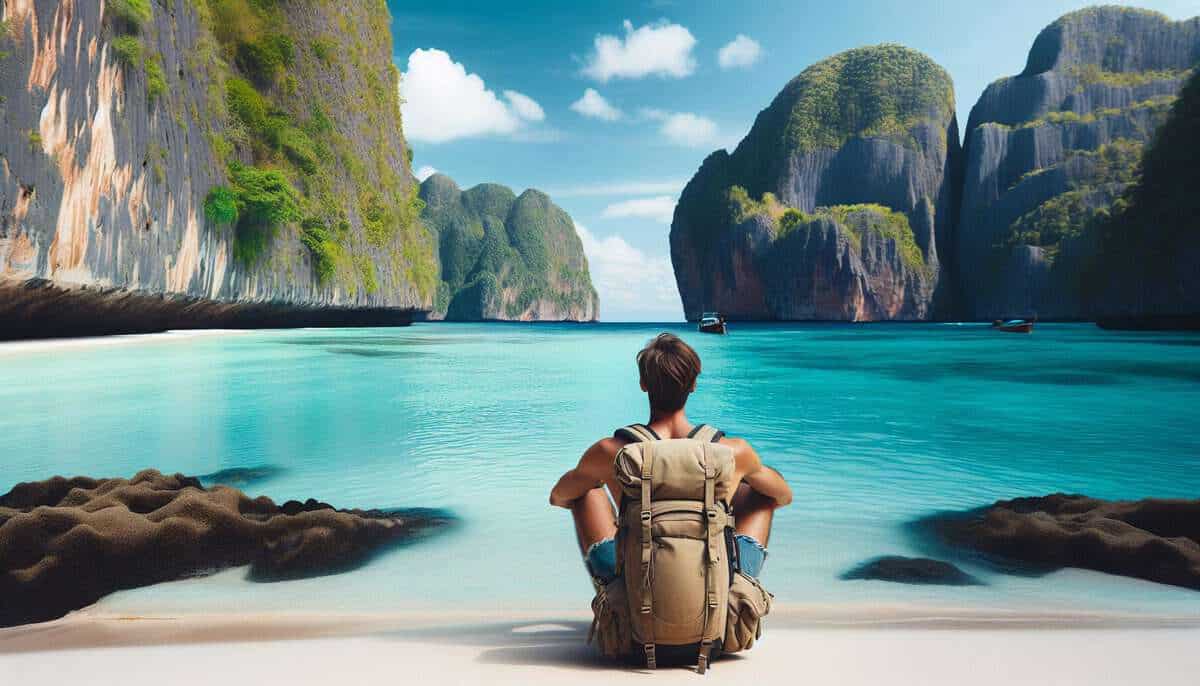
From breathtaking natural beauty to bustling urban life and tranquil islands, the Philippines is a travel destination second to none.
Here are some of the unique places that will captivate you
Manila: The Bustling Capital
Manila is usually just a quick stopover, but it’s worth spending a day or two.
Explore Intramuros, the old walled city, and go to Rizal Park to get a glimpse of the nation’s history.
For a night out, go to Poblacion in Makati, where you can find great bars & street food.
For a deeper dive into Manila’s hidden gems, Nomadic Southeast Asia has a great guide on must-visit spots.
Palawan: Island Paradise
Palawan has some of the prettiest shores on Earth.
El Nido is well-known for its amazing rock cliffs and island-exploring trips, while Coron is a great place for shipwreck diving.
If you’re looking for a calmer getaway, go to Port Barton for chill beach feels.
Also has a nice Muslim vibe, particularly in its southern areas and beyond hospitable.
Pre-book your island hopping tours with Klook (klook.com) for the most discounts.
Siargao: Surfing and Chill Vibe
Siargao is the surfing capital of the Philippines, but even if you ain’t no surfer dude, you’ll enjoy its chill vibe.
Catch the wonderful waves at Cloud 9, check out Sugba Lagoon, or ride a boat to Naked, Daku & Guyam Islands.
For transportation and accommodation tips, read Nomadic Southeast Asia’s guide to Siargao.
Cebu and Bohol: Chocolate Hills and waterfalls
Adventure haven Cebu: Swim with whale sharks in Oslob, follow waterfalls at Kawasan, and trek to Osmeña Peak for a panoramic view.
Close by is Bohol, renowned for the Chocolate Hills and small tarsiers.
Organize ferries from Cebu to Bohol hassle-free with Biyaheroes (biyaheroes.com).
Northern Luzon: Rice Terraces and Mountain Treks
For scenic views, go north. Banaue & Batad Rice Terraces are a must-visit, even called the “Eighth Wonder of Earth.”
If you’re a trekker, climb Mt. Pulag to witness a sunrise above the clouds.
Wherever you may travel, the Philippines is full of experiences that would be unforgettable.
Get ready to pack and start the adventure!
The Bangsamoro Autonomous Region in Muslim Mindanao (BARMM)
Offers a rich tapestry of cultural and natural attractions.
Here are some of the must-see and visit spots:
Cultural and Religious Sites:
Sultan Haji Hassanal Bolkiah Mosque (Grand Mosque of Cotabato)
A magnificent architectural landmark in Cotabato City, symbolizing the region’s Islamic heritage.
Located in Datu Saudi-Ampatuan, Maguindanao, this unique pink mosque is a symbol of peace and unity.
One of the oldest mosques in the Philippines, located in Tawi-Tawi, representing the deep historical roots of Islam in the region.
Aga Khan Museum (University Museum)
Located in Marawi City, this museum displays Islamic art and culture.
How to Get Around the Philippines
The Philippines consist of more than 7,000 islands, so traveling about might be troublesome.
But do not worry, there are heaps of ways of getting around from planes & ferries to local short rides.
Here’s how ya need to know to move about easily.
Domestic Flights and Ferries
Since the nation is dispersed over numerous islands, local flights are the quickest method of traveling long distances.
Low-cost airlines such as Cebu Pacific (cebupacificair.com) & AirAsia (airasia.com) provide affordable flights between primary destinations such as Manila, Cebu, and Palawan.
To make island hops of lesser distances, a boat is ideal.
Use apps such as 2GO Travel (travel.2go.com.ph) & OceanJet (oceanjet.net) have popular routes such as Cebu to Bohol and Manila to Coron.
Grab, Buses, Jeepneys, & Tricycles
There are lots of buses, jeepneys, and tricycles around to travel by road.
Buses: Great for longer hauls between towns. Operators like Victory Liner (victoryliner.com) have routes to places like Baguio & Banaue.
Jeepneys: The most well-known & least expensive way to move through towns. Just jump in, hand the driver your fare, and say where you’re headed.
Tricycles: Perfect for brief trips in tinier cities. Always settle on a cost before hopping in to stop being charged too much.
Renting Motorbikes and Scooters
If you wish to be more independent, renting a scooter or a motorcycle is highly advisable, particularly in places such as Palawan, Siargao, & Cebu.
Rental usually ranges from $5–$10 per day, and for this, you need an international driving permit (IDP) so that you can drive legally.
For trusted rentals, look at Klook (klook.com) or ask for recommendations from your hostel.
With these modes of transportation, getting around the Philippines is a breeze & a blast.
Just think ahead, be accommodating, and have a ball.
Accommodation Options for Backpackers
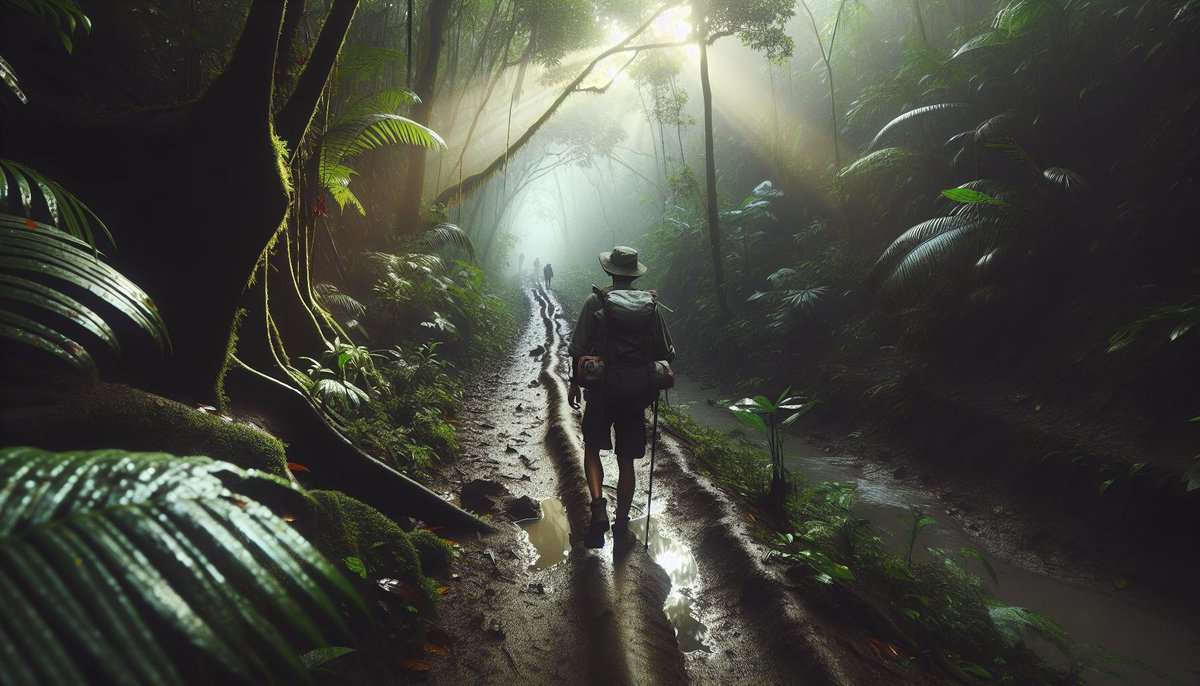
Finding a nice spot to stay in the Philippines ain’t hard, whether you got a small budget or want something different.
From cheap stays to nature lodges, these are the top choices for travelers.
Hostels and Budget Hotels
Hostels are the backpacker’s top pick. They’re affordable, communal, and even offer free morning breakfasts in some places.
Large hostel chains like Mad Monkey have locations in Manila, Siargao, and Cebu, offering dormitory beds at $5–$10 a night.
Budget motels are also something to consider if you don’t mind having a bit more privacy.
Online websites like Agoda (agoda.com) & Booking.com (booking.com) offer great deals on low-cost accommodations.
For a list of the top budget-friendly places to stay, Nomadic Southeast Asia has an extensive guide to where to sleep in various towns.
Homestays and Guesthouses
If you prefer a more personal experience, homestays & guesthouses are an excellent option.
Families often rent out rooms in their houses, where you can experience Filipino hospitality.
This is often the situation in towns such as Banaue, Bohol, and Siargao.
You can look for homestays on Airbnb (airbnb.com) or inquire when you are there.
Some also offer homemade meals, so it’s an excellent way to experience real Filipino cuisine.
Camping and Eco-Lodges
For nature lovers, camping & eco-lodges are the best.
There are some beaches, like Nacpan Beach in Palawan, where you can camp for a small charge.
You can also sleep in eco-lodges like The Birdhouse El Nido, which provides glamping with wonderful sea views.
If green traveling is your thing, Klook (klook.com) offers eco-friendly accommodations in most parts of the country.
No matter what your budget is, the Philippines has a lot of cool places to stay.
Just reserve in advance during peak season & have a great vacation.
Packing List and Travel Essentials in the Philippines
Packing for the Philippines can be tough since you’ll be moving between shores, towns, & hills.
To be sure you’re ready, here’s a checklist of important things for your backpacking trip.
Backpacking Gear and Clothing
Since the Philippines is warm & humid, bring light, airy clothes.
Fast-drying tops, shorts, and a bathing suit are must-haves. If you’re going to the hills, carry a thin jacket for chilly evenings.
Must-have gear includes:
- Backpack (40-50L) – A good size for island-hopping and easy transport.
- Dry bag – Keeps your stuff safe during boat trips.
- Flip-flops and hiking shoes – For both beach days and treks.
- Microfiber towel – Lightweight and fast-drying.
Tech and Photography Equipment
The Philippines is ridiculously photogenic, so bring the right gear to capture your travels.
Essentials are:
- Smartphone with waterproof casing – Best for beach and island shoots.
- Power bank – Some islands have limited electricity, so keep your devices charged.
- GoPro or action camera – Great for underwater and adventure shots.
- Universal adapter – The Philippines uses Type A, B, and C plugs.
For discounted travel gadgets, check out Klook (klook.com), which often has deals on accessories.
Health and Safety Essentials
Staying healthy while traveling is key. Here’s what you’ll need:
- Sunscreen (reef-safe) – Its your skin and the ocean’s best friend.
- Mosquito repellent – Keeps the bites at bay, especially in rural areas.
- First aid kit – Band-aids, painkillers, and motion sickness pills.
- Travel insurance – A must for health problems & lost luggage. SafetyWing (safetywing.com) offers cheap traveler insurance.
With the right gear, you’ll be ready for an epic adventure in the Philippines.
Final Thoughts
Alright, guys, let’s recap this with a little heart-to-heart, okay?
It’s not a pin on a map, it’s an adventure living and breathing, ready to blow!
Imagine those Palawan beaches – a dream come true, aren’t they?
And then you have Siargao’s surf culture, so laid back, you’ll forget the day. It’s like the Philippines has a bit of something for every soul.
And wait for it: you can actually live there. No burning cash, just plain old experience.
Immerse yourself in the culture, fill your belly with the street food (your taste buds will thank you, believe me), and soak up the hospitality of the Filipino people.
They are the real deal.
And the secret is this: ditch the rigid plans.
Seriously, the Philippines is all about great chaos. That impromptu detour? That’s where the magic happens.
Roll with the punches, take the surprises in stride, and you’ll be returning with stories that’ll poison your friends’ envy green.
Got the travel bug bite? Want to make it a lifestyle? You can! That guidebook to Southeast Asia?
Its not just about those good-looking shots; its about turning the trip into a real, rwhere travel is truly attainable in your life.
And if you’re willing to turn your vacations into moolah, “How to Make Money Traveling Blogging in 2025” is for you.
Whether you’re a seasoned old pro at globetrotting or a new adventurer, the Philippines is your playground.
It’s affordable, it’s gorgeous, and the locals? Pure sunshine.
So, pack that bag, book that flight, and get ready for the trip of a lifetime. You’ve got this!
And don’t stress, budget-friendly accommodations are totally doable – just book ahead in high season and dive into the adventure!
Frequently Asked Questions (FAQs)
What is the best time to go backpacking in the Philippines?
The best time to go backpacking in the Philippines is during the dry season, its peak season for hiking, which is from November to April. Its when you can expect the best weather, ideal for island-hopping and outdoor activities. However, if you don’t mind getting wet, the shoulder months of May and October are also a good time to go, with fewer tourists and lower costs.
Do I need a visa to backpack in the Philippines?
It is dependent on your nationality. The majority of tourists are able to enter the Philippines visa-free for stays of up to 30 days. If you’re staying longer, you’ll be able to extend your visa in the country. Always check the latest visa requirements on the Philippine Bureau of Immigration website before traveling to make sure you have the right documents.
How much should I budget for backpacking in the Philippines?
Backpacking in the Philippines can be relatively cheap. Daily spending will be around $30 to $50 for accommodations, food, transportation, and activities. This can change, naturally, depending on your travel style and what islands you happen to go to. Always find local grub and budget-friendly places to stay in order to stretch your money!
What are the must-visit destinations for backpackers in the Philippines?
Some of the top attractions are Palawan, famous for its stunning beaches and lagoons; Siargao, which is well-known for surfing; and Cebu, which offers beautiful waterfalls and historical sites. You must visit the rice terraces in Northern Luzon and the Chocolate Hills in Bohol. Each location has its unique charm and activities in store for you.
How do I get around the Philippines while backpacking?
Getting around the Philippines is already an adventure. The easiest way to move between islands is by domestic flights, but for shorter trips, ferries are perfect. Jeepneys, buses, and tricycles are perfect for local transportation. Taking a motorbike on hire is also quite popular for island-hopping according to your own timeline. Just remember to always wear a helmet and drive safely!
